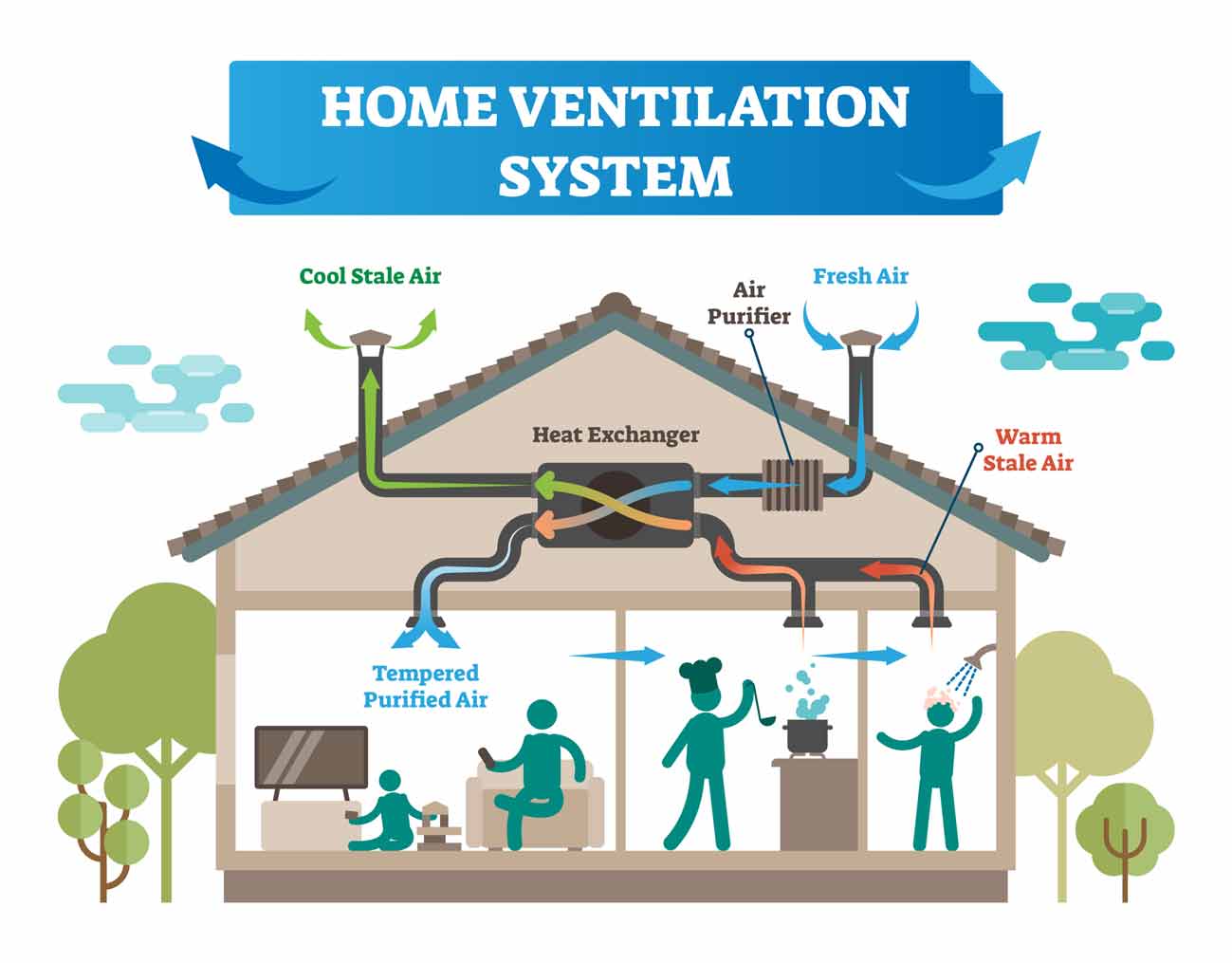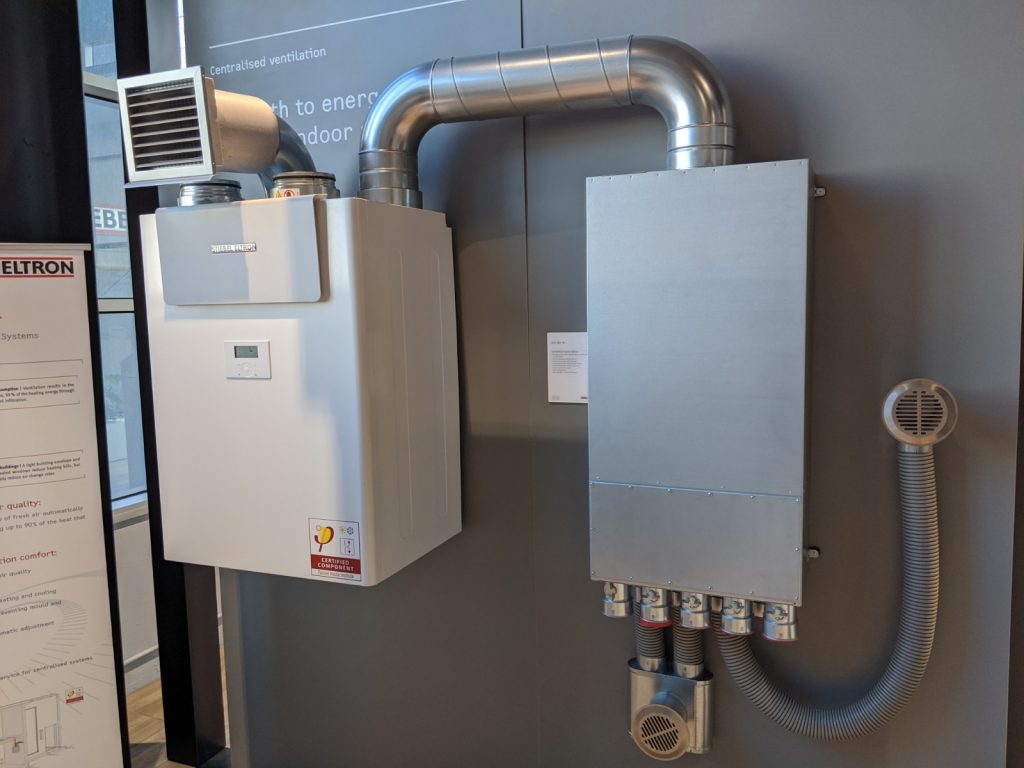How Does HRV and Why It Matters for Energy Savings
The All-Inclusive Overview to the Uses of Heat Recovery Ventilation in Modern Structures
Heat Recovery Ventilation (HRV) systems stand for a significant improvement in building innovation (HRV Heat Recovery Ventilation). They offer a method for exchanging stagnant indoor air with fresh exterior air while reducing energy loss. This method not only boosts interior air quality however also adds to energy effectiveness in both residential and business buildings. Recognizing the various applications and advantages of HRV can reveal its essential role in modern-day design and sustainability efforts. The ramifications of this technology deserve exploring even more
Understanding Heat Recovery Ventilation Systems

Several modern buildings prioritize power effectiveness, recognizing warmth recuperation air flow (HRV) systems is important for maximizing indoor air high quality and decreasing energy consumption. HRV systems work by moving heat from stagnant indoor air to incoming fresh air, efficiently keeping comfy interior temperature levels while minimizing energy loss. These systems consist of a heat exchanger, followers, and ductwork that help with the flow of air. During wintertime, HRV units catch and recycle warm from the outgoing air, while in summer, they can aid cool incoming air. By continuously exchanging air, HRV systems also reduce moisture and the focus of interior contaminants. Correct installment and upkeep of HRV systems are crucial for their performance and efficiency in enhancing total structure efficiency and convenience.
Advantages of Heat Recovery Ventilation
Heat recovery ventilation systems use various benefits that boost both power efficiency and indoor air high quality in modern buildings. By capturing and recycling power from exhaust air, these systems greatly minimize heating and cooling expenses, causing reduced power intake. Moreover, they keep a steady circulation of fresh outside air, lessening the risk of interior air toxins and allergens. This continual exchange assists manage moisture levels, avoiding mold and mildew development and guaranteeing a much healthier living atmosphere. Additionally, HRV systems add to sustainability objectives by lowering general carbon footprints. Their capability to maximize ventilation without giving up thermal convenience makes them a useful enhancement to modern structure design, promoting both economic and ecological advantages.
Applications of HRV in Residential Structures
As homeowners significantly prioritize power performance and interior air quality, the applications of warmth healing ventilation (HRV) systems in household buildings have become extra prevalent. HRV systems are especially helpful in securely sealed homes, where keeping fresh air flow is important for stopping wetness accumulation and indoor contaminants. They effectively transfer warm from outbound stagnant air to incoming fresh air, reducing energy prices related to heating & cooling. In addition, HRVs can boost convenience levels by managing humidity and temperature. They are likewise adaptable for various domestic styles, including single-family homes and multi-unit structures. In general, incorporating HRV systems sustains sustainable living techniques while ensuring a healthier interior atmosphere for occupants.
HRV in Industrial and Industrial Settings
In industrial and industrial setups, the implementation of warmth recuperation air flow (HRV) systems has come to be significantly important for enhancing power performance and maintaining air quality. These systems efficiently move warm from exhaust air to incoming fresh air, lowering the need for added heating or air click here for more info conditioning. This not only decreases energy prices but also contributes to sustainability initiatives. Industries such as manufacturing, warehousing, and office complex profit considerably from HRV systems, as they assist manage temperature level and humidity degrees, guaranteeing a comfortable and efficient setting. In addition, HRV systems help in removing impurities and excess moisture, improving indoor air top quality. As laws around air high quality end up being stricter, the fostering of HRV modern technology is most likely to expand, making it a crucial component of modern commercial and commercial framework.
Future Trends in Heat Recovery Ventilation Innovation

Regularly Asked Questions
How Does Heat Recovery Ventilation Influence Indoor Air Quality?
Heat recovery ventilation greatly improves interior air high quality by continually exchanging stagnant indoor air with fresh outdoor air while recuperating energy. This process lowers pollutants, maintains perfect moisture degrees, and guarantees a healthier setting for owners.
Can HRV Systems Be Mounted in Existing Buildings?
HRV systems can certainly be mounted in existing buildings. Retrofitting may call for modifications to ductwork and ventilation formats, but it significantly boosts energy effectiveness and interior try this web-site air high quality, making it a feasible option for older structures.
What Upkeep Is Required for HRV Solutions?

Are There Details Climates Where HRV Is More Reliable?
Heat recovery ventilation systems are especially efficient in environments with substantial temperature differences between seasons. These systems maximize energy performance by recuperating warmth from exhaust air, making them ideal for both cool and moderately warm settings.
Exactly How Do HRV Systems Affect Energy Costs?
